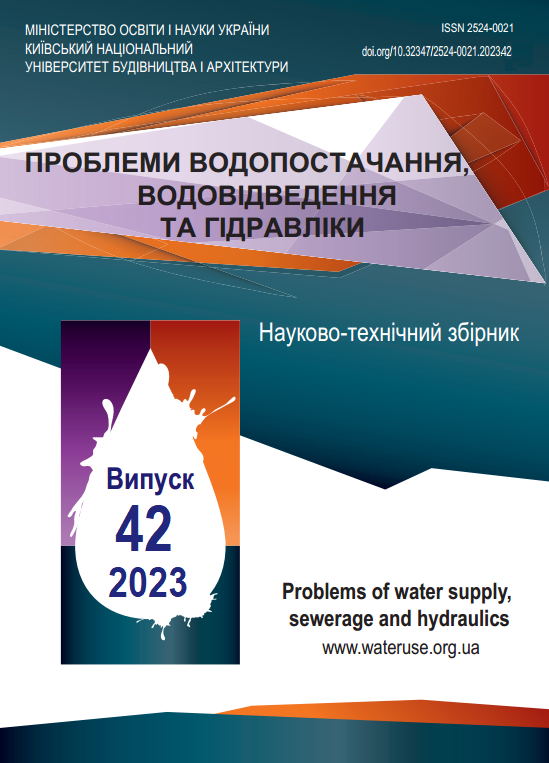BIM-ТЕХНОЛОГІЇ В ПРОЄКТУВАННІ ІНЖЕНЕРНИХ МЕРЕЖ
DOI:
https://doi.org/10.32347/2524-0021.2023.42.29-34Ключові слова:
BIM-технології, проєктування, інженерні мережі, управління інженерними мережамиАнотація
Існує декілька визначень BIM, доступних від Вікіпедії до Міжнародної організації стандартизації (ISO), які більш-менш послідовно описують BIM наступним чином: процес або спосіб керування інформацією про об'єкти та проєкти для координації кількості входів та виходів, використовуючи спільні цифрові уявлення про фізичні та функціональні характеристики будь-якого побудованого об'єкта, включаючи будівлі, мости, дороги, промислові об'єкти чи інженерні мережі. Незважаючи на загальне визначення, ми часто спостерігаємо, що BIM має різний зміст для різних людей. Не існує єдиного міжнародного стандарту або визначення діяльності, яка повинна виконуватися в рамках проєкту, щоб вона вважалася проєктом BIM. Дуже часто ми зустрічаємо думку, що BIM – це програмне забезпечення, 3D-модель або система. Така невідповідність спричиняє плутанину та розбіжності між державними замовниками та постачальниками приватного сектору, що створює перешкоди для успішної реалізації. Досвід від EUBIMTG передбачає, що чітке та конкретне визначення заходів та характеристик у поєднанні з поетапною реалізацією стратегії у реалістичний термін виявилось найбільш перспективним підходом до успішної трансформації будівельного сектору. Наступні характеристики "Загального рівня ефективності ЄС" описують діяльність, яка повинна бути послідовно виконана в рамках проєкту, щоб вона вважалася проєктом ЄС BIM. Вони повинні розглядатися як мінімальні критерії для закупівлі та реалізації будівельних проєктів послідовно у всій Європі. Це має на меті розгортання окремих цілей, але це є реальним для всіх європейських країн одночасно. Впровадження BIM-проєктування у процес вищої освіти в Україні тільки розпочинається, особливо в частині проєктування інженерних мереж. Якщо курси BIM-проєктування для майбутніх архітекторів є скоріше нормою, ніж виключенням, то в частині проєктування мереж водопостачання важко знайти відповідних спеціалістів, а тим більше – викладачів.
Посилання
Bundesministerium fur Umvelt, Na-turschutz, Bau und Reaktorsicherheit (2010) Leipzig Charta zur nachhaltigen europäischen Stadt Angenommen anlässlich des Informellen Ministertreffens zur Stadtentwicklung und zum territorialen Zusammenhalt in Leipzig am 24./25. Mai 2007. Informationen zur Rau-mentwicklung, 4. Retrieved from https://www.bauen-wohnen.sachsen.de/download/LeipzigCharta.pdf
Fesenko, T., Fesenko, G., & Bibik, N. (2017) The safe city: developing of GIS tools for gender-oriented monitoring (on the example Kharkiv city, Ukraine). Eastern-European Journal of Interiorise Technologies, 3/2(87). 25–33. https://doi.org/10.15587/1729-4061.2017.103054
Fesenko, Т. G. (2017) Gender mainstream-ing as a knowledge component of urban project management. Bulletin of NTU "KhPI". Series: Strategic Management, Portfolio, Program and Project Management, 3(1225). 21–29. https://doi.org/10.20998/2413-3000.2017.1225.4
Fesenko, T., Shakhov, A., Fesenko, G., Bibik, N., & Tupchenko, V. (2018) Modeling of customer-oriented Construction Project Man-agement using the gender logic systems. East-ern-European Journal of Enterprise Technolo-gies, 1(3-91), 50-59. https://doi.org/10.15587/1729-4061.2018.123124
Fesenko T., Levadna S., Pereverzeva V., & Aldakymov S. (2016) Valueoriented man-agement of urban projects on preservation of the historical and cultural heritage. Conference program and proceedings International scien-tific-practical conference of young scientists «BUILD-MASTERCLASS-2016», 16-18 of No-vember 2016. Kyiv: Kyiv University of Con-struction and Architecture. 208–209.
Fesenko, T. G., & Minaev, D. M. (2015) Integration of interests of housing construction beneficiaries into the system of project values. Management of the development of complex systems, 21. 81– 86. Retrieved from http://urss.knuba.edu.ua/ua/zbirnyk-21/article-749
Trach, R. V. (2021) Cognitive mechanisms of construction project management based on BIM technologies (Master’s thesis). KNUCA, Kyiv. [in Ukrainian]
Borodavka, E. V. (2017) Methodology of creating information technology for automation of the life cycle of construction objects (Doctoral dissertation). National Aerospace University «Kharkiv Aviation Institute», Kharkiv. [in Ukrainian]
Kyivska K. I. (2016) Information integrated technologies for modeling construction objects (Doctoral dissertation). KNUCA, Kyiv. [in Ukrainian]
European Federation of Engineering Consultancy Associations (2019) BIM and ISO 19650 – in the context of project management Organization and digitization of information about buildings and structures with building information modeling (BIM). Retrieved from http://iceg.com.ua/wp-content/uploads/2019/11/EFCA_Flipbook_BIM_ukr_.pdf [in Ukrainian]
General Assembly of the EU BIM Working Group (2020) Guide to the implementation of information modeling in construction, created by the European public sector. Retrieved from http://www.eubim.eu/wp-content/uploads/2020/12/2017_EU-BIM-Handbook_ua.pdf [in Ukrainian]
Shebek, M., Dubynka, O., Oryshchenko, V., Tugai, A., & Petrenko, D. (2019). Optimi-zation terms and cost of investment-construction projects by detailing components of objects life cycle using information model-ing. Ways to Improve Construction Efficiency, 41, 54–62. https://doi.org/10.32347/2707-501x.2019.41.54-62
##submission.downloads##
Опубліковано
Як цитувати
Номер
Розділ
Ліцензія
Авторське право (c) 2023 Олександр Кравченко, Віктор Хоружий, Володимир Любенко, Ігор Недашковський

Ця робота ліцензується відповідно до Creative Commons Attribution 4.0 International License.
Автори, які публікуються у цьому журналі, погоджуються з наступними умовами:
a) Автори залишають за собою право на авторство своєї роботи та передають журналу право першої публікації цієї роботи, яка через 70 років після смерті останнього співавтора з дати публікації автоматично стає доступною на умовах ліцензії Creative Commons Attribution License, котра дозволяє іншим особам вільно розповсюджувати опубліковану роботу з обов'язковим посиланням на авторів оригінальної роботи та першу публікацію роботи у цьому журналі.
b) Автори мають право укладати самостійні додаткові угоди щодо неексклюзивного розповсюдження роботи у тому вигляді, в якому вона була опублікована цим журналом (наприклад, розміщувати роботу в електронному сховищі установи або публікувати у складі монографії), за умови збереження посилання на першу публікацію роботи у цьому журналі.
c) Політика журналу дозволяє і заохочує розміщення авторами в мережі Інтернет (наприклад, у сховищах установ або на особистих веб-сайтах) рукопису роботи, як до подання цього рукопису до редакції, так і під час його редакційного опрацювання, оскільки це сприяє виникненню продуктивної наукової дискусії та позитивно позначається на оперативності та динаміці цитування опублікованої роботи (див. The Effect of Open Access).


